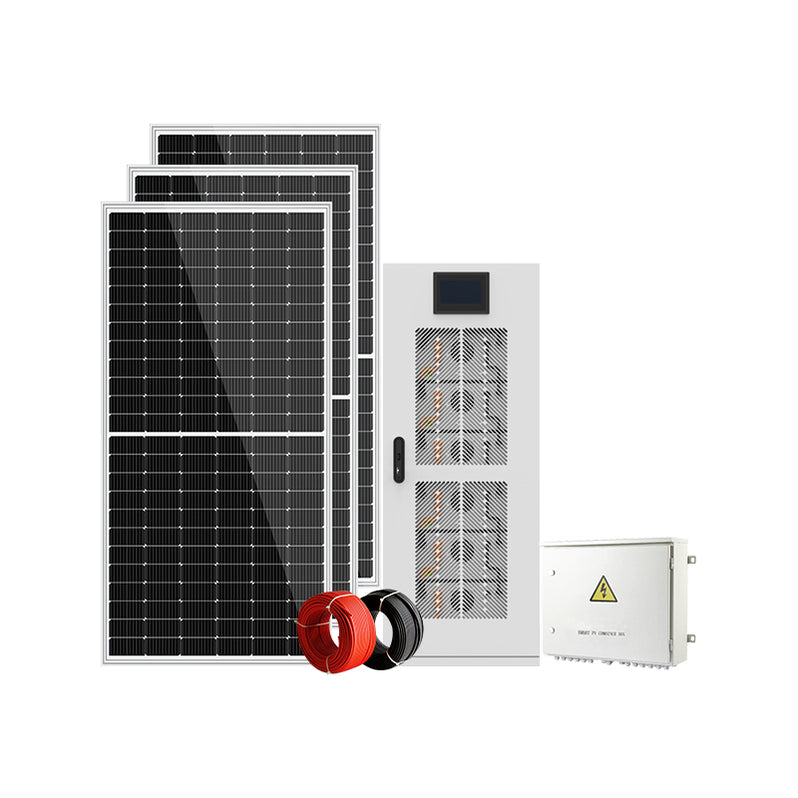Unlock the Secrets: Which Solar Power System Will Revolutionize Your Energy Game?
As the world grapples with the challenges of climate change and rising energy costs, solar power generation systems have emerged as a beacon of hope for many households and businesses alike. These systems harness the sun's energy, converting it into electricity that can power homes, charge devices, and even feed back into the grid. With advances in technology, the options available for solar energy have expanded significantly, making it essential for potential buyers to understand the different types of systems on the market. This article aims to compare these diverse solar power generation systems, helping you make an informed purchase that aligns with your energy needs and goals.

Understanding Solar Power Generation Systems
Solar power generation systems consist of several key components that work together to convert sunlight into usable electricity. The primary component is the solar panel, which captures sunlight and converts it into direct current (DC) electricity. This electricity is then passed through an inverter, which changes it into alternating current (AC) electricity, the form used in most home appliances. Additional components may include batteries for energy storage, charge controllers to manage battery charging, and mounting systems for installation. Understanding how these components interact is crucial for evaluating the efficiency and suitability of a system for your specific needs.
Types of Solar Power Generation Systems
When considering a solar power generation system, it is important to know the available types, each with its unique advantages and disadvantages. The three primary categories are grid-tied, off-grid, and hybrid systems. Grid-tied systems are connected to the local utility grid, allowing for net metering and the ability to sell excess energy back. Off-grid systems operate independently from the grid and rely on battery storage, making them suitable for remote locations. Hybrid systems combine elements of both, providing flexibility and reliability. Each type offers distinct benefits depending on your energy needs, budget, and location.
Grid-Tied Systems
Grid-tied systems are the most common type of solar power generation system. They operate in conjunction with the utility grid, allowing users to draw electricity from the grid when their solar panels aren't producing enough energy, such as during the night or on cloudy days. The primary benefits include lower installation costs and the ability to sell excess power back to the grid. However, one potential drawback is that during a power outage, grid-tied systems will not function unless equipped with a battery backup.
Off-Grid Systems
Off-grid systems provide complete independence from the utility grid, making them ideal for rural areas or locations with unreliable grid access. These systems usually include batteries to store energy for use when solar production is low. The main advantage is self-sufficiency, providing peace of mind in emergencies. However, they often come with higher initial costs due to the need for substantial battery storage and may require more maintenance to ensure reliable energy supply.
Hybrid Systems
Hybrid systems offer a combination of grid-tied and off-grid capabilities. They can operate connected to the utility grid while also being equipped with battery storage. This versatility allows users to benefit from grid electricity when available while also having a backup power source for emergencies. The primary advantage is increased energy reliability and flexibility, but they can be more expensive to install due to the additional components required for both grid interaction and energy storage.
Factors to Consider When Choosing a Solar Power System
Choosing the right solar power generation system involves careful consideration of various factors. First, assess your energy needs by analyzing your electricity consumption patterns. This will help determine the size of the system you require. Next, consider your location; factors such as sunlight exposure, roof orientation, and local weather conditions can impact system efficiency. Budget is also crucial—while solar technology has become more affordable, initial investment costs can still vary widely. Lastly, installation requirements, including permits and local regulations, should be factored in to ensure a smooth installation process.
Comparative Analysis of Solar Power Generation Systems
In comparing the different types of solar power generation systems, several factors come into play. Grid-tied systems are generally the most cost-effective and easiest to install, making them suitable for urban homeowners. Off-grid systems, while more expensive, provide unmatched independence and are perfect for those living in remote areas. Hybrid systems, on the other hand, offer the best of both worlds, but they come with higher costs due to the need for batteries and additional equipment. Evaluating these aspects will help you determine which system aligns best with your energy goals and financial situation.
Making an Informed Choice for Sustainable Energy
In conclusion, selecting the right solar power generation system is essential for maximizing energy efficiency and sustainability. As we've explored, each type of system has its strengths and weaknesses, and the best choice will depend on individual circumstances such as energy needs, location, and budget. By understanding the different options available and considering key factors during your decision-making process, you can make a purchase that not only meets your energy demands but also contributes positively to the environment. Embrace the power of the sun and take control of your energy future today!








